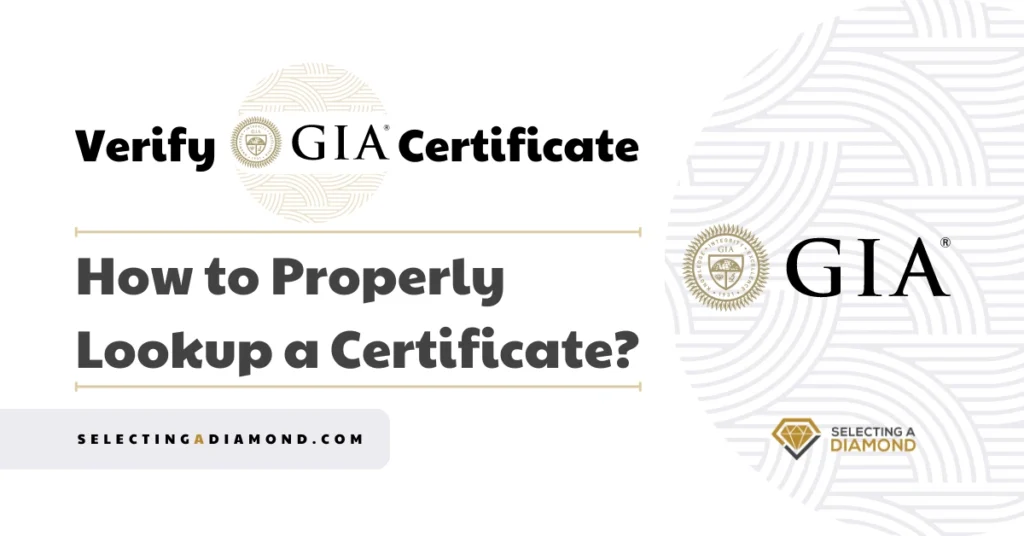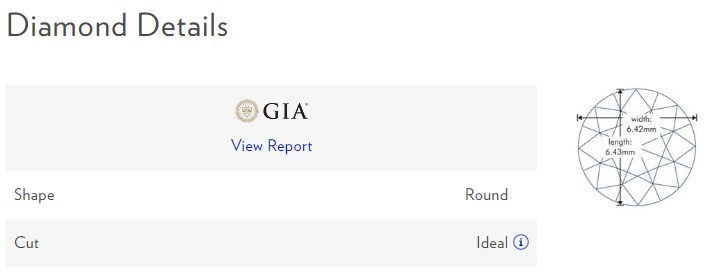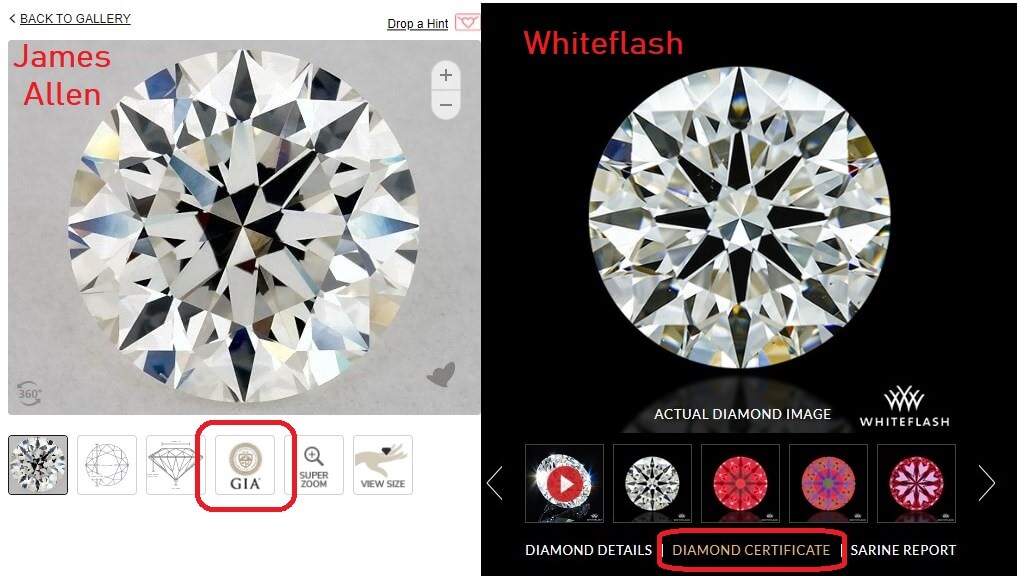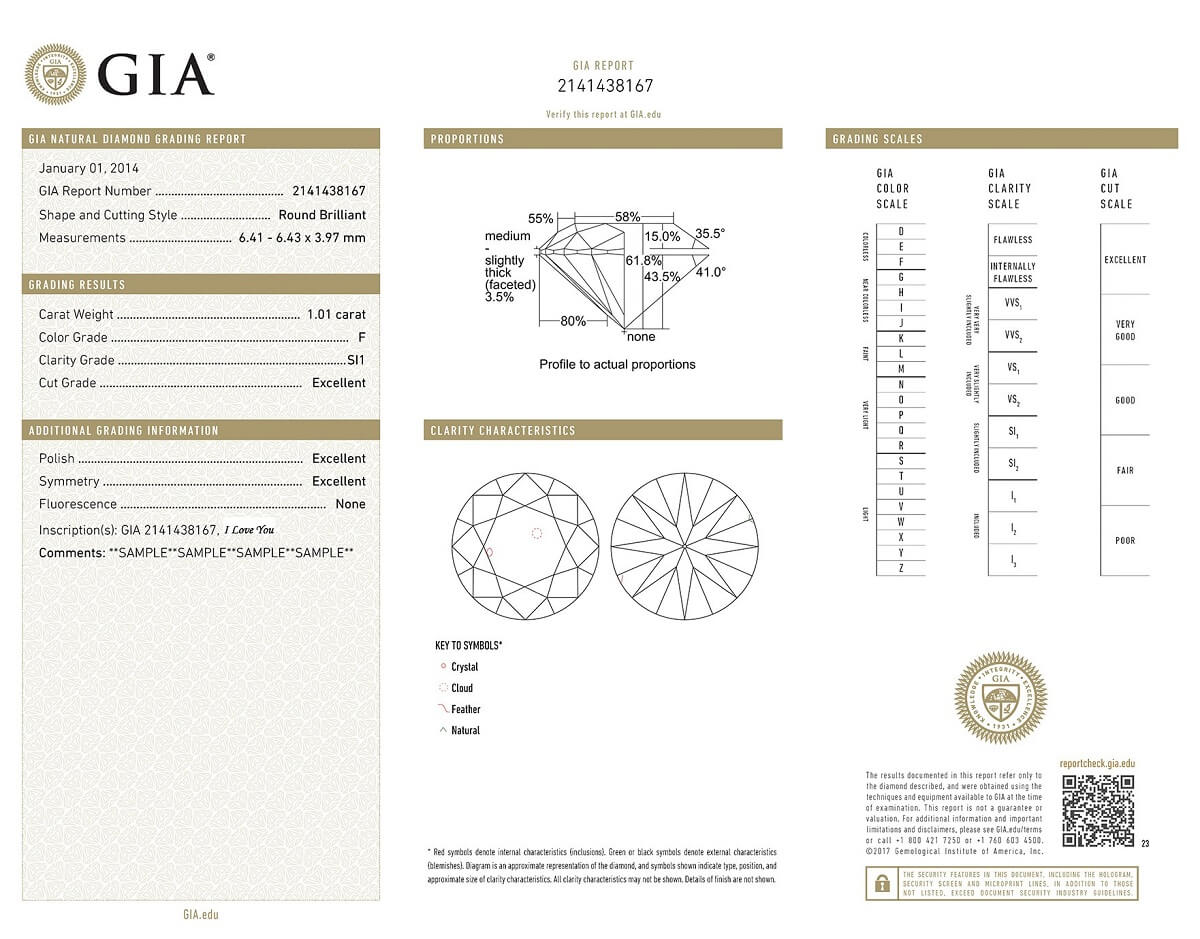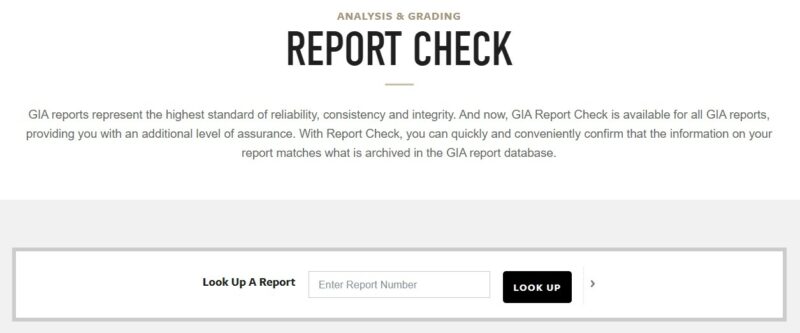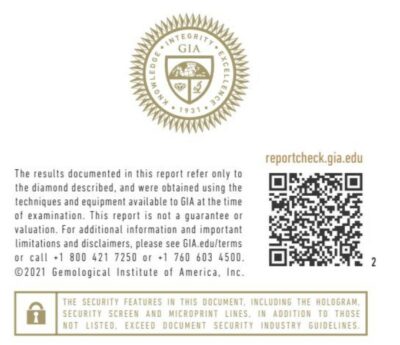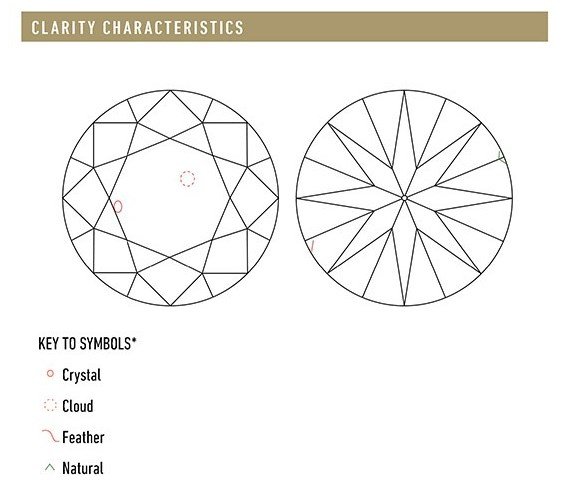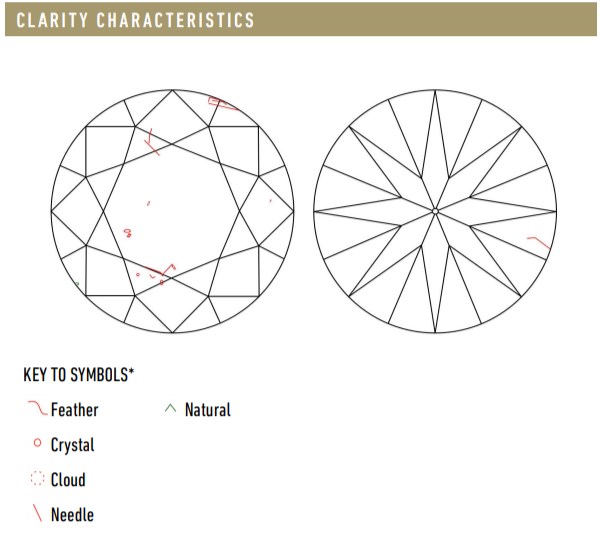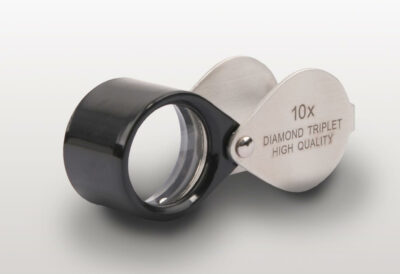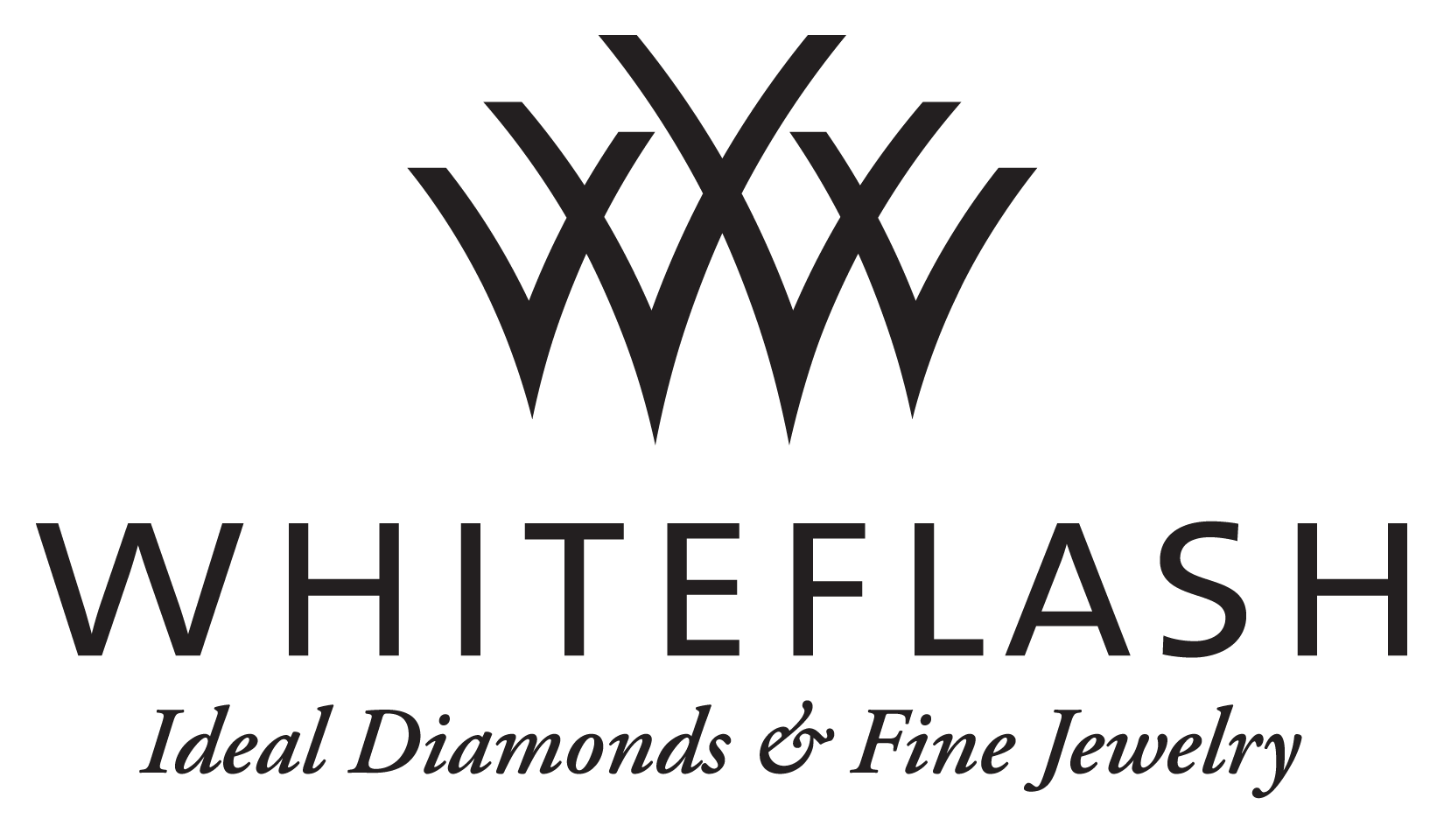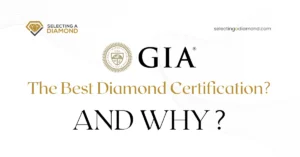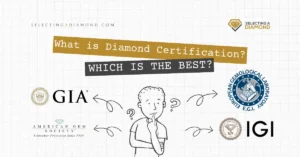We may earn a commission when you purchase through our affiliate links, at no extra cost to you. This helps support our work and allows us to continue providing unbiased, expert diamond advice.
Summary in a few lines:
Most of us are familiar with the GIA and why its certificate is considered the most reputable one in the diamond industry. The GIA report consists of the highest standards of reliability, consistency, and integrity, period!
When you’re browsing reputable online stores like James Allen or Blue Nile, and come across a stunning diamond like this 1.1 VS2 H on BN, or a similar one on James Allen, and inspect their GIA certificate on the same page, you can clearly be sure that you’re examining the right certificate for that diamond.
But, if you’re in a local store, or a less known online diamond retailer, how you can verify a GIA diamond certificate? Are all GIA certificates in the market are original?
In other words, how to tell if this certificate belongs to this diamond? And is the GIA certificate you saw for that diamond was officially issued by GIA for that exact diamond you’re considering? How you can verify if the certificate is fake or genuine?
There are several ways to be safe here and verify a GIA certificate, like buying from a trusted store maybe? Or checking the certificate number on GIA site, also you can further check by matching diamond characteristics.
Let’s get into a bit more of details here.
GIA & Revolutionizing Diamond Grading
Robert M. Shipley had a vision to “professionalize the jewelry trade through education”! And so, he founded the GIA; the Gemological Institute of America. And at that time, it was the first of its kind in the US and the world.
Robert sought to put standards and ethics when buying and selling diamonds as well as other precious stones.
In a nutshell, almost everything we see today in diamond grading & certification is here because of GIA in a way or another.
GIA created the 4Cs and their respective charts (which you can browse here for cut chart, this is color chart, and here is the clarity chart as well).
And because certificate is crucial in your diamond shopping journey, major online stores list the certificate right in the diamond page, viewable in a single click.
Finding GIA Certificate at Online Diamond Stores
Whenever you’re browsing online stores like Blue Nile and you come across a great diamond like this one, scroll down a little bit and you will find a GIA logo under the “Diamond Details section” (no wonder why it’s located on the top section of the report), like this one:
Click the image to see the actual full GIA report for that diamond.
This is the same when you’re on James Allen or Whiteflash, you can see the real GIA report for diamonds graded by GIA, however, this is not standard across all stores!
Not sure where to buy your diamond among these names? We got your back, the 3 mentioned stores are our favorite, and that’s why we created specific post for each, feel free to read:
James Allen Review: Largest online stores with unmatched imaging technologies
Whiteflash Review: Home Of A CUT ABOVE® super ideal diamonds
Blue Nile Review: Widest collection of diamonds & jewelry
Is This Standard Across all Stores?
We hope one day to come at this section, scratch all text on it and clearly say yes, but unfortunately, the number of stores (both online and physical) showcasing and selling low-quality stones is increasingly growing, many are using fake GIA certificates as well!
For this reason, nowadays, it’s becoming more important than ever to check the GIA certificate if it’s real, official, legit, and if it actually represents the diamond you’re thinking of purchasing!
While our favorite online vendors; that we always recommend you to buy your diamonds from are 100% safe on this front, nevertheless, you might still want to double-check the certificates with less-known (or some scammy) online diamond vendors and in local stores.
Before going full “detective Conan” on this and discovering how to tell if the GIA certificate is original or fake, a good place to start would be to examine together how a typical GIA certificate actually looks like.
GIA Certificate Sample
Here is a sample of GIA report, it contains everything you need to know about the diamond (click the image for a larger view, opens in a new tab):
The certificate contains several sections, starting by the 4Cs.
Mentioning the 4Cs, we think it’s important to see why -in order of importance- diamond Cut is the most important diamond characteristic among them.
Then we see more details about polish & symmetry, visual measurement representation, and other info as well.
GIA Report Number Lookup: Verifying the Certificate Online
Before doing any kind of inspection whatsoever, every GIA report/certificate has a unique number (10-digit) on its top, this number is unique for every report issued by certificate, and note here we’re saying unique per certificate/report, but not per diamond, why?
Because diamond can be inspected more than 1 time by GIA (or any other lab), and in this case it will get a new report number.
Now go the official GIA Report Lookup page here.
Then enter the report number you have as you see here:
You should clearly see the resulted report (that must match the one you have).
This confirms one thing here, that this report you have is officially issued by GIA, so step is 1 done, step 2 is to verify that the report you see is the for this particular diamond you’re examining.
Let’s see.
How to Verify if GIA Report is For a Specific Diamond?
Faking a GIA report (as a piece of paper) is easy, but what’s easier is checking it online in less than a minute to know it’s fake!
The thing is that it’s not only about having an official report by GIA, some “amateur” stores provide real GIA reports, but for different diamonds!
So when we check the GIA report, any report, we need to notice what makes it real, and what makes it for the diamond we’re checking!
Look now again the sample report above, other than all diamond specifications on the left (4Cs, measurements, Polish, Fluorescence, etc…), take a look at these:
1. QR Code:
Starting 2014, GIA started to include a QR (Quick Response) code to ALL reports, it’s added at the bottom right of the certificate.
Scan it to go to the Diamond Report Check Page on GIA. If the report is older than 2014, it won’t be there, but it would be a good question to know why a diamond wasn’t sold for all that time (or maybe it’s a second hand diamond?).
Here you can verify that the link you reached shows the exact report you have (including report number).
2. The Clarity Characteristics Section:
This is the MOST important thing you need to look at your report. If your diamond is more than one carat, the GIA report will have this in the middle-lower section.
This Clarity section will tell you where exactly the inclusions appear on the diamond (unless it’s flawless which is a very rare grade, and we believe it’s impossible for someone to have one and willing to use a fake GIA to sell it).
If you’re on a website that doesn’t show a magnified image of the diamond, DON’T shop there. Never get a diamond without seeing it.
That’s why we always recommend getting from the known brands like James Allen, Blue Nile & Whiteflash, which provide all the details necessary about the diamond.
For example, if you look at this diamond on Blue Nile, and then check its GIA certificate clarity section:
You will be able to match most of inclusions you see on the diamond, this is more easily doable on James Allen with their insane 40x magnified 360 HD videos (even with 20x since their imaging technology is superb).
If you’re in a local store, ask to see the diamond under magnification, every store will have a magnifier (loupe) like this one:
Look at the diamond on the exact locations pointed in the clarity section and match inclusions between report and the diamond in your hand.
Inclusions on the report are 100% accurate, and if you saw an inclusion that’s not on the exact location marked on the report, it might be a fake one, and you better get out of that store.
If you’re more into diamonds and can tell what type of inclusion is it, you can also match the location with the type as well, such low-quality stores will try to match diamonds with the same inclusion spots, but it’s less likely to match inclusion types as well!
3. Other Considerations:
You may want to check & match ALL characteristics of the diamond on the certificate with the ones provided, it’s less likely a seller will have unmatched characteristics, but you never know, as Einstein once said
“Two things are infinite: the universe and human stupidity” Albert Einstein
If you’re good in numbers and giving approximations, try to see if the dimensions provided for the diamond in the report make sense and match what you’ve in your hand.
Look at the Hologram, security code, QR, all information on the GIA report, something there will tell you about that.
4. Save Yourself All This Hustle and Buy From Trusted Stores
We really believe that this is too much work to do! You already have your plate full with things to prepare for getting the diamond, whether it was for an engagement proposal, or just a regular purchase.
You better spend your time on learning more about how to find the best diamond at the best price, not how to be “scammed” by such diamond retailers, actually, why you might be shopping from a place that you already have worries about?
That’s why we always recommend shopping diamonds online from reputable stores, and here are our top 3 vendors:
Summary
Buying diamond from a trusted store is your safest option to guarantee that the certificate you see is for the diamond in question.
GIA, the leaders in diamond grading allows you to lookup, check & verify a report/certificate number on their website directory on this link.
We believe you should always focus on learning how to buy a great diamond for your budget (and here is a buying guide that will help), instead of inspecting & verifying if a GIA certificate is real or fake.
That’s why we always recommend getting your rock from a trusted store.
Still not sure where to buy your diamond?
We always recommend shopping diamonds online and created a Full guide to shop diamonds like a Pro.
Among online retailers, here are our favorite stores click their logo to visit store
-
James Allen:
Our favorite online store, best diamond imaging technology available today, comes with the largest collection with more than half a million loose diamonds.
-
Blue Nile:
Widest collection of loose diamonds of all sizes, great imaging technology for most of their inventory (hundreds of thousands of diamonds), great customer support.
-
Whiteflash:
Home Of A CUT ABOVE® Super Ideal Diamonds, they stand out from the crowd by offering premium diamonds cuts, tailored to those who love the details, at great prices too.

